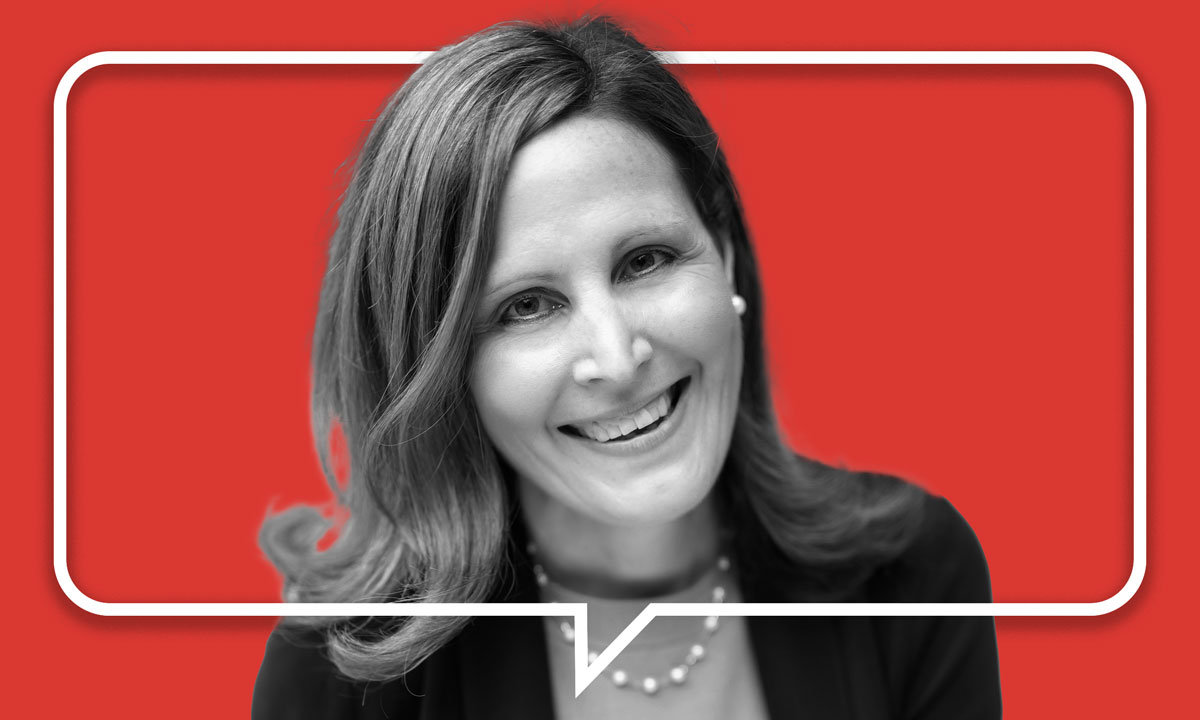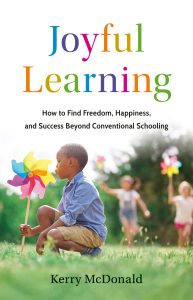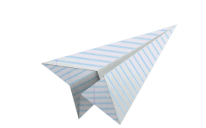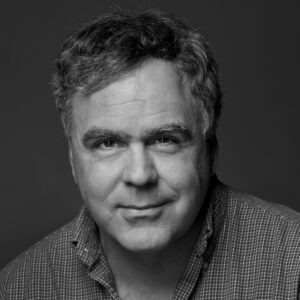New Book Charts Microschool Founders’ Paths to Independence
Kerry McDonald’s Joyful Learning examines how COVID fueled an alternative schooling movement that is changing U.S. education from bottom up.

Get stories like this delivered straight to your inbox. Sign up for The 74 Newsletter
On March 11, 2020, the day the World Health Organization declared COVID-19 a pandemic, Kerry McDonald wrote in her Forbes column that we were witnessing “the world’s homeschooling moment.” She told readers that while the virus was keeping children out of school, they should consider that they “can be educated without being schooled. They may even be better educated.”
McDonald predicted that even a few weeks of displacement from school for millions of kids could fundamentally change education.
And while most kids would eventually return to school once the epidemic faded, she wrote, “some parents may discover that learning outside of schooling benefited their children and strengthened their family.” They might begin to consider homeschooling or other alternatives as a longer-term option. “They may realize that education without schooling is not a crisis but an opportunity.”
Five years later, it seems, something fundamental has changed: As many as 125,000 microschools now operate nationwide, according to the National Microschooling Center, and several states now support homeschooling and microschooling with public funds.

McDonald, a Massachusetts mother of four, frequent contributor to The 74, host of the LiberatED podcast and the author of a 2019 book about self-directed education and alternatives to traditional schooling, set out to capture what the movement looks like now in her new book, Joyful Learning: How to Find Freedom, Happiness, and Success Beyond Conventional Schooling. It’s out Tuesday.
She charts an ideologically diverse group of parents and teachers who are striking out on their own to essentially start small education businesses. The common thread, she finds, is a “desire to bring to education the level of personalization that we increasingly enjoy in all other parts of our lives.”
McDonald talked to The 74’s Greg Toppo recently about the book and the microschooling movement.
The interview has been edited for length and clarity.
The 74: I wanted to start with this quote in your book from a Kansas mom who launched a microschool. She says, “The fringe is becoming the cloth.” That’s quite a statement, quite a realignment, if true. Do you agree that that’s what’s happening?
I’ve been covering unconventional education — homeschooling and microschooling — for over a decade now. This movement really began prior to 2020, and at the time I thought that we would continue to see slow but steady growth in homeschooling and alternative education more generally. But I always thought it would stay in the margins.
When COVID hit in 2020 and there was that massive educational upheaval, it enabled families to start to think more creatively about education options, to maybe look more openly at homeschooling and microschools and other ways of approaching teaching and learning. And many families liked what they saw. Some families even built these new alternatives. Since 2020, we’re really seeing a much more mainstream push towards alternative education.
I think it’s fair to call these folks disruptors.
Peaceful disruptors.
But I wonder if we’re getting ahead of ourselves to start calling it mainstream. I mean, there are still 50 million kids in public schools.
If you look at some of the data in Arizona, for example, so many families are opting out of traditional district schools. Obviously, charter schools would be their primary alternative at the moment, but certainly with the expansion of school choice programs and universal programs in places like Arizona, you’re seeing more and more families realize that they have other options, and they’re able to find schools and spaces that are aligned with their values and viewpoints in ways that they haven’t before.
“We see so much innovation in the 21st century in so many other segments of society, while K-12 education has largely been standardized and stagnant.”
Kerry McDonald
We have to give it a little bit of time, because we need to let these entrepreneurs do their work. As more and more entrepreneurship takes hold, we’ll see more options for families, and families will be able to find just what they’re looking for.
I want to define just who you write about in this book, because it’s a really specific kind of person. As you say, they’re people who “built what they couldn’t find.” You’ve got folks who start religious microschools, Montessori microschools …
LGBTQ+ microschools, Afrocentric microschools …
You talk to folks like Ken Danford, who opens this homeschooling co-op in Massachusetts, and it’s interesting that he’s in the mix because he blanches at the “coercive qualities” of traditional schooling, even the compulsion to attend at all. That’s a pretty broad coalition. And I wonder: What do these folks have in common?
It is a broad coalition. What’s so exciting about this current decentralized, entrepreneur-driven educational moment, is that it’s extremely diverse. There are founders of every demographic and ideological persuasion, and different motivations for creating programs, whether it’s that they can’t find what they’re looking for for their own children and they want to create something better, or they just think that there’s a different way of approaching education.
I think about Tamara Becker, the founder of Adamo Education in Arizona. Her microschool, which now has 73 students across several locations — she didn’t build that for her children. She doesn’t have children, but was a long-time public school teacher and administrator, and just felt that COVID provided this moment to individualize education and move away from a one-size-fits-all learning model into something more relevant and personalized for the 21st century. That’s the common thread among these entrepreneurial parents and teachers, that desire to bring to education the level of personalization that we increasingly enjoy in all other parts of our lives.
The other common thread, and why the book is titled Joyful Learning, is that despite the tremendous diversity of these models — from secular, progressive microschools to conservative, faith-based, microschools, and different educational philosophies and approaches, from classical to Montessori to unschooling and everything in between — these programs are places where children are happy to be learning. I saw that as I crisscrossed the country and interviewed the founders and families on my podcast and interviews related to the book. That was a very apparent characteristic of all of these spaces: Children are happy to be there. They are often sad when snow days hit or when summer vacation approaches.
As you were going through this list of different kinds of schools and all these founders, I wondered, “How did you find all these folks?” Obviously, you have this podcast. Were they coming to you? Were you going to them?
Great question. I’ve been in the alternative education movement for a long time. I wrote my 2019 book, Unschooled, which is where I first connected with people like Ken Danford. So I have, thankfully, a rich network of folks in the alternative education world and in homeschooling that crosses political and ideological lines. In many cases, folks have come to me.
Then, of course, COVID hit, and there was more and more interest in alternative education. In early 2022 I decided to launch my LiberatED podcast, because I wanted a multimedia approach to storytelling beyond the articles I was writing, and was able to connect with many of these founders there. For the most part, founders have come to me. I’ve been able to visit many of these founders, either by reaching out to them because they’ve been on my podcast or featured in articles, or by them inviting me to come. I also have done a lot of collaboration with the Vela Education Fund [a group of entrepreneurs supporting alternative learning models] that’s now supporting over 4,000 of these innovative educators across the country.
“Children are happy to be there. They are often sad when snow days hit or when summer vacation approaches.”
Kerry McDonald
My work now is just sort of an extension of the work that I’ve been doing in alternative education for over a decade.
As much as anything, this book is an instruction manual for future founders and, I guess, for policymakers as well.
And parents.
What are you hoping readers come away with in terms of real instruction?
The book is primarily geared towards founders and families. Obviously, I’d love it if policymakers read it as well, and members of the media like yourself who are curious about this movement. But it’s primarily a book for parents and founders of programs. And there’s often a lot of overlap between those two groups. A lot of the founders that I talked to had no intention of becoming education entrepreneurs, or opening a school or a microschool or learning pod, and either because of COVID and the disruption caused by that, or just being unable to find exactly what they were looking for for their own children, ended up making that leap into entrepreneurship. In most cases, they found the experience to be incredibly rewarding.
The majority of the founders are former public school teachers who were disillusioned with the standardization and test-driven learning environment that they found in conventional schools. Many of these teachers found their own creativity and autonomy stifled within a conventional classroom and wanted somewhere where they could be free to educate the way they felt was most effective and beneficial to the students they’re serving.
There’s got to be a very steep learning curve for the parents who are not trained teachers, and I wonder if you saw that in your reporting. Did you see parents struggling to make school come alive?
Most of the founders in the book are former teachers. Some of them became homeschooling moms after being public school teachers and then opened homeschooling collaboratives. I think about Alicia Wright in Richmond, Va., who runs Cultural Roots Homeschool Collective. She was a longtime public school teacher-turned-homeschooling-mom-turned-founder. So there’s also that trajectory. A lot of these founders who are parents and who launch programs are highly successful in their own right.
I think about Sharon Massinelli, who runs St. John the Baptist Hybrid Homeschool in Georgia, a physician associate as well as a long-time homeschooling mom who has balanced work and homeschooling for years. She was really attracted to a hybrid homeschool model that enables part-time enrollment off-site with trained educators working through a curriculum for half the week, and then the other half students are at home working through that same curriculum with their parents. That has been a model that’s been around since the 1990s and continues to gain popularity, especially over the last five years. She was able to create her own hybrid school after her children had been attending another hybrid school program that was far away and not quite what she wanted. She was able to use that model and create something new.
That’s what we see with many of the entrepreneurial parents who may not have a background in education but are incredibly successful in their own professions. Now, they have so many resources to help them launch and grow their programs, largely because of the network effects from more and more of these programs existing. You have these microschool startup programs like Kai Pod Learning or Launch Your Kind that really work with these everyday entrepreneurs to create successful, sustainable programs.
I want to be sure to address this issue, which a lot of people coming to your book might be wondering about: This idea that the choice movement itself is not as simple as just joy and entrepreneurialism. There are a lot of people who feel like it’s a play to undermine public schools, and I wonder how you approach that.
What we’re seeing now is the expansion of choice, variety and abundance in education that we enjoy in so many other parts of our lives, but that we haven’t had much of in education because it’s been largely dominated by traditional public schools. It’s a good thing that we see more options for families, more ways of approaching education beyond a conventional classroom. It’s no surprise that more families are gravitating to forest schools and farm schools and outdoor learning environments, because they want something that’s much more play-based, that’s much more learner-centered, and that’s much less restrictive and standardized than a conventional classroom. That’s a key piece of this: We see so much innovation in the 21st century in so many other segments of society, while K-12 education has largely been standardized and stagnant.
For folks who might not know about you, it’s fair to say you lived this. During the pandemic, your oldest set off on her own to do distance learning, and you enrolled your younger three in the private Sudbury Valley School. Talk a little bit about your experience — right in the middle, by the way, of doing the reporting for all this.
My kids were unschooled, homeschooled since birth — never attended a conventional classroom. They were attending a microschool a couple of days a week when COVID hit and the microschool shut down. All of the classes that they were taking throughout the city were shut down for months in many cases, more than a year in some.
I write in Joyful Learning about how at one point I realized that all of this education disruption that I was documenting among other families was hitting my family as well, and we were making education changes as a result, including, as you say, my older daughter, Molly, who had always been homeschooled. She began taking online classes and then ended up enrolling in a full suite of high school online classes through ASU Prep Digital while remaining legally a homeschooler in Massachusetts. She’s since graduated and is off to college. Next Saturday she moves in. And then the younger three enrolled in the Sudbury Valley School, which I had written about extensively in my Unschooled book and always really adored, but it’s far away from us, and also is a state-recognized private school. We were comfortable with homeschooling, but changes among our education ecosystem during that time of disruption led us to pursue other options, and they were thrilled to join Sudbury Valley.
Do you envision us ever going back to the way things were before COVID? And how do you think this movement is going to change the system itself?
Do I think we’re going to go back to the way it was before COVID? No, and my answer is related to your second question. What we’re seeing is a much greater focus around decentralized, choice-enabled, entrepreneur-driven education that’s responsive to the needs and wants of parents in local communities. One of the things I talk about in the book is the contrast between the education disruption and reform that happened in the wake of Hurricane Katrina, which, of course, we’re coming up to the 20th anniversary later this month and what we’ve seen in terms of education reform and change in the wake of COVID.
After Hurricane Katrina, the change largely came from the top. It was the state of Louisiana that took over the New Orleans Public School district to orchestrate change from the top, albeit with the goal of eventually returning New Orleans schools to local control, which would take more than a decade to accomplish. By contrast, the educational change that we’ve seen since COVID is the opposite. It’s an entirely bottom-up, decentralized movement of entrepreneurial parents and teachers creating the kinds of schools and spaces that enable young people to flourish and be happy.
Get stories like these delivered straight to your inbox. Sign up for The 74 Newsletter

;)
